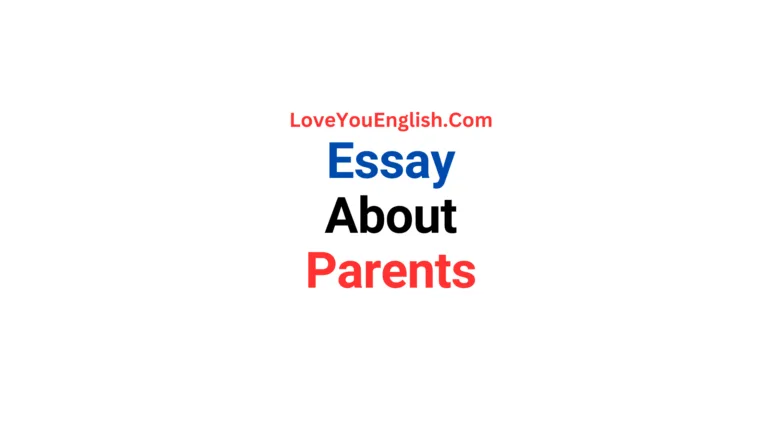Online Learning vs. Traditional Classroom Learning
In today’s world, students have more ways to learn than ever before. Some students go to school buildings and sit in classrooms like people have done for hundreds of years. Others learn at home through computers and the internet.
Both online learning and traditional classroom learning have good points and bad points. This essay will look at both ways of learning to help you understand how they are different and what might work best for different students.
What Is Traditional Classroom Learning?
Traditional classroom learning means going to a school building and learning in person. You sit in a classroom with other students and a teacher who is physically there with you. This is how most people learned before computers and the internet became common.
In a traditional classroom:
- You follow a set schedule every day
- You learn face-to-face with teachers and other students
- You have access to physical resources like libraries, labs, and sports facilities
- You can ask questions and get answers right away
- You can join clubs, sports teams, and other activities after school
What Is Online Learning?
Online learning means taking classes through a computer or tablet over the internet. You might learn from home or anywhere you have internet access. The teacher isn’t in the same room with you but teaches through videos, online assignments, and sometimes live video calls.
In online learning:
- You often have more flexible scheduling
- You learn through digital resources like videos, online readings, and virtual activities
- You communicate with teachers and classmates through messages, emails, or video calls
- You complete and submit assignments electronically
- You may work more independently
The Good Things About Traditional Classroom Learning
Face-to-Face Interaction
One of the biggest advantages of traditional classrooms is being able to interact with teachers and classmates in person. When you have a question, you can raise your hand and get an answer right away. Teachers can see your face and tell if you’re confused or understanding the material.
Maria, an 8th grader, says, “I like being able to talk to my teacher when I don’t understand something. She can show me exactly what to do right there on my paper.”
Structure and Routine
Going to school every day creates a helpful routine. You know exactly when classes start and end. This schedule helps many students stay organized and focused.
“Having a bell schedule keeps me on track,” says Jamal, a 10th grader. “I know I have math from 9:00 to 9:50, then science after that. It helps me plan my day.”
Social Development
School isn’t just about learning subjects like math and reading. It’s also about learning how to get along with others, make friends, and work in groups. These social skills are important for life.
Traditional schools offer many chances to develop these skills through:
- Group projects
- Lunch and recess time with friends
- School clubs and sports
- Class discussions and activities
Hands-On Learning
Some subjects are easier to learn by doing things with your hands. Science labs, art classes, physical education, and music are all better when you can use real equipment and materials.
“In chemistry class, we did real experiments with actual chemicals,” says Tyler, an 11th grader. “It’s so much more interesting than just reading about chemical reactions.”
The Good Things About Online Learning
Flexibility
One of the biggest advantages of online learning is flexibility. Students can often learn at times that work best for them. If you’re a morning person, you can do your work early. If you think better at night, you can study then.
“I take dance classes in the afternoon, so I do my schoolwork in the morning and evening,” explains Sophia, a 9th grader who learns online. “I couldn’t do that with regular school.”
Learning at Your Own Pace
In a traditional classroom, everyone moves through the material at the same speed. In online learning, you can often slow down when you need more time or speed up when you understand something quickly.
“Math was always hard for me,” says Carlos, a 7th grade online student. “Now I can watch the video lessons as many times as I need to really get it.”
Technology Skills
When you learn online, you get better at using computers, software, and the internet. These digital skills are very important for most jobs today and in the future.
Fewer Distractions
Some students get distracted easily in busy classrooms. Online learning can sometimes be quieter and have fewer interruptions.
“I have ADHD, and it was hard for me to focus with 25 other kids in the room,” explains Alex, a high school junior. “Learning at home in my quiet room helps me concentrate better.”
The Challenges of Traditional Classroom Learning
One Size Doesn’t Fit All
Traditional classrooms sometimes struggle to meet the needs of all students. If you learn faster or slower than most of your class, it can be frustrating.
“I understand math really quickly, but then I have to wait while the teacher explains it to everyone else,” says Leila, a 6th grader.
Bullying and Social Pressure
Unfortunately, being around other students isn’t always positive. Some students face bullying, feel left out, or worry too much about fitting in.
“I used to get really anxious about what to wear to school and who to sit with at lunch,” admits Jordan, who switched to online learning in 8th grade.
Commuting Time
Getting to and from school takes time. Some students spend an hour or more on buses or in cars each day.
Fixed Schedule
The set schedule that helps some students can be a problem for others, especially those with outside commitments like competitive sports, family responsibilities, or health issues that make attending regular classes difficult.
The Challenges of Online Learning
Requires Self-Discipline
Online learning puts more responsibility on the student. Without a teacher physically present, you need to manage your own time and stay motivated.
“It’s easy to procrastinate when no one is watching you,” admits Diego, a 10th grader. “I had to learn to set my own deadlines and stick to them.”
Less Social Interaction
Learning from home means fewer chances to make friends and develop social skills. This can lead to feelings of isolation for some students.
“I miss seeing my friends every day,” says Aisha, who switched to online learning during 7th grade. “We have video calls, but it’s not the same as hanging out in person.”
Technical Problems
Online learning depends on technology working properly. Internet outages, computer problems, or issues with learning platforms can interrupt your education.
Limited Hands-On Learning
Some subjects are harder to learn online. Science labs, art projects, physical education, and music lessons often work better in person.
Which Is Better?
The truth is that neither online learning nor traditional classroom learning is better for everyone. What works best depends on each student’s:
- Learning style
- Personality
- Family situation
- Goals and interests
- Support system
Some students do better with the structure and social aspects of traditional classrooms. Others thrive with the flexibility and independence of online learning. Many schools now offer hybrid options that combine both approaches.
Finding What Works for You
If you’re trying to decide between online and traditional learning, ask yourself these questions:
- Do I learn better when I can work at my own pace, or do I need more structure?
- How important is face-to-face interaction with teachers and other students to me?
- Do I have the self-discipline to stay on task without a teacher physically present?
- What learning environment helps me focus best?
- What resources do I need access to for my educational goals?
Conclusion
Both online learning and traditional classroom learning have their strengths and weaknesses. The good news is that education is becoming more flexible, with many schools offering combinations of both approaches.
What matters most is finding the learning environment that helps you succeed. For some students, that’s a traditional classroom. For others, it’s learning online. And for many, it might be a mix of both.
Remember that the goal of education isn’t just to get good grades—it’s to prepare you for your future by helping you learn important information and skills. Whether you’re sitting in a classroom or learning through a computer screen, what’s most important is that you’re engaged, supported, and developing a love of learning that will stay with you throughout your life.







